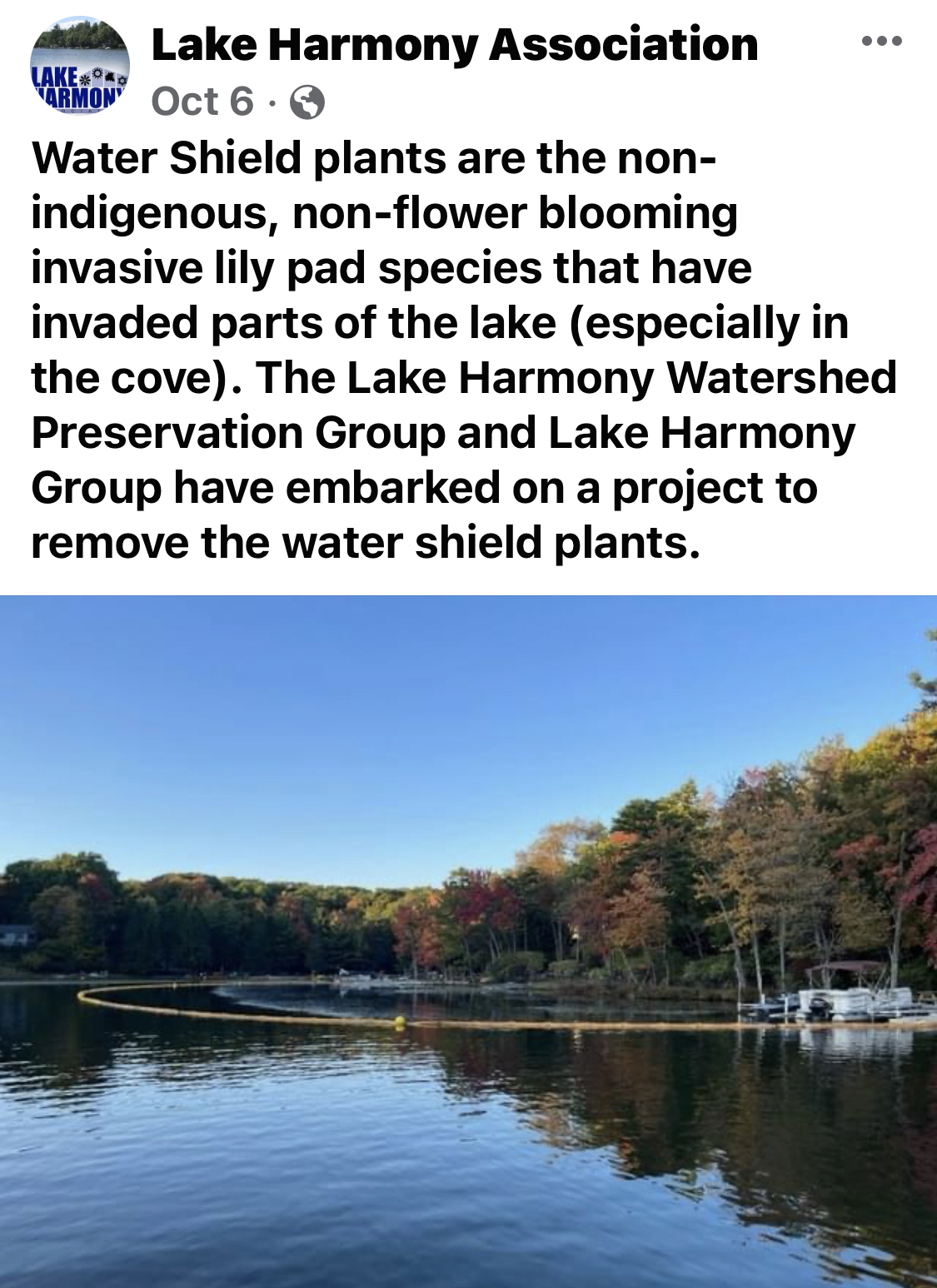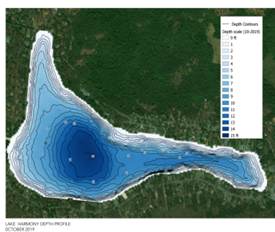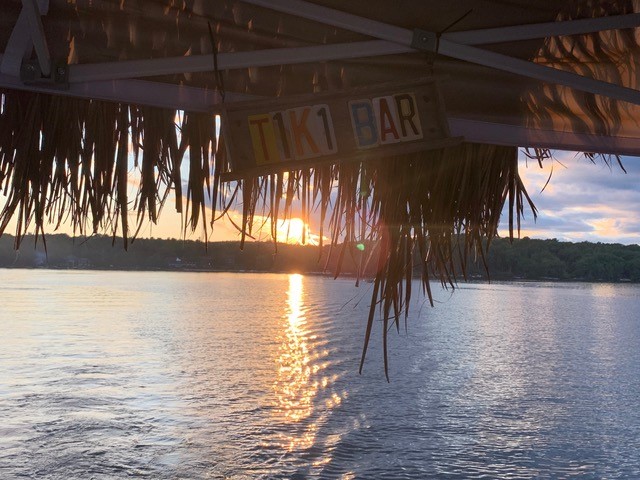LHWPG Projects
LHWPG's mission is to ensure the health of Lake Harmony for future generations, and the numerous projects geared to assure well-engineered watershed management and lake health are ongoing.
All projects sponsored by LHWPG receive proper design with detailed planning by enlisting a number of skilled engineering professionals who employ geologic and hydro-geologic lake and watershed management/wetland services. LHWPG has spent well over $30,000 on these detailed engineering planning and storm water management assessments and projects.
Help to educate Lake Harmony homeowners and visitors about major causes of rapid lake decline by learning about:
1. Water Shield Invasive non-indigenous plant treatment started on Oct. 2, 2023 - ongoing joint project by LHG and LHWPG.
This photo shows the boom in the Cove to capture the water shield plants - review more in the Reports section.

2. Storm water initiatives, including leaf removal and collection from streets, clogged culverts and drains
Each year, leaf removal from streets and common areas surrounding the lake is performed. Leaf-clogged culverts and drains is the #1 cause of ineffective storm water management. Refer to the LHWPG Events Page for planned leaf removal dates.
3. Cinder and salt sweeping from the streets around the lake
Sweeping salt and cinders from streets around the lake is performed in the spring to minimize the amount of this debris from running into the lake which would further reduce lake depth and water quality.
4. Construction of rain gardens to control excess storm water
Rain gardens are used to collect rain water and aid in control of excess storm water runoff. LHWPG focused on number of rain garden projects at the Church/Lesher, Kidder and Summit streets. Storm water engineering reports by Arro and Hanover Engineering stated that one of the major reasons Lake Harmony fills with sediment and leaves is the ineffectiveness of drainage structures resulting from clogged drains, leaves blocking and filling rain gardens, and build up of debris over the years. We can all help to remedy this ongoing concern by donating to the LHWPG projects to help defray expenses and to have culverts professionally cleaned.
5. Inspection and treatment of invasive plants
LHWPG spends approximately 20% of the annual receipts on inspection and treatment of invasive plants to maintain the health and integrity of the lake. Methods to control water lilies growing around private docks and in other small areas are being investigated. In our Reports section, review the Natureworks updates.
 |
6. Lake Aeration
Bubblers installed in 2018 mix the lake water, which oxygenates the entire water column and sediment throughout the lake. This removes toxic gases and carbon dioxide, accelerates biological breakdown of organic nutrients and offers many additional advantages, such as odor control, improves the habitat for fish and can greatly improve the aesthetic beauty of the lake. Currently the bubblers are running throughout the year and while the benefits are substantial, your donations will help us to keep these bubblers online and funded in the coming years. Review the Clean-Flo Reports 2021 - 2025 and also the historical reports generated in previous years when this project was being evaluated and initiated.


